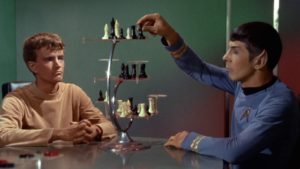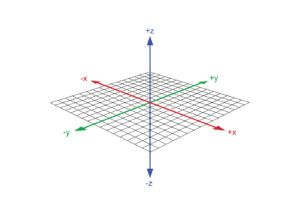I’m lucky that, due to my job, I get to spend a lot of time with people that are on the front edge of change in organizations. They’re driving new operating models, bringing new techniques into their orgs, introducing new strategies. I also spend a lot of time with senior leaders who are trying to make sense of all the change around them, and hear the terminology, jargon and new language the same way I hear Spanish or French: I sort of understand it, I know i should “get it”, but I struggle to connect.
Imagine you’re a sales SVP with a 30 year track record of success and a consultant hits you with: “We need to do an empathy map across the consumer journey and then productize the consumer experience and build an innovation roadmap for the differentiating features so the product teams can stay agile!”. I understand what that means, but it’s not going to mean anything real to the SVP because it’s relevant to my work, not hers. And, it’s not just the jargon that’s getting in the way.
There’s a difficult communication challenge for leaders of change. They have to translate what they are seeing in their context (i.e. on the front lines of change) to senior leaders in a different context (i.e. their traditional mindset from their somewhat removed organizational perch).
How does a change leader get good at translating between contexts?
The Z-axis
There’s a scene in Star Trek where Spock and some space guy are playing a version of chess on multiple levels. I remember it because it looked cool, Spock was creepy, and my dad had a version of his own, made by a friend, when I was growing up. He and his buddies would play it after their dinner parties, when they were probably a little tipsy. He and I tried playing it a couple times (before I got bored and went back to reading the encyclopedia). But, I do remember the insight I had when my dad showed me the basic concept: a move on one layer has impact on others and, to win, you had to understand the playing surface and options on all the levels. I was never good at chess, and this new wrinkle only made the game harder for me, but the concept stuck.

The innovation in the chess game was created by adding a Z-axis, giving the game three dimensional depth. An already hard game now had, literally, other layers of complexity.
I probably should have remembered the concept of the Z-axis from some middle school math. But, in case you forgot, too, the Z-axis is – ah!- the 3rd dimension on a Cartesian plane. If X is horizontal, Y is vertical, Z is height/depth. It’s a way of marking and identifying the infinite layers on plane.

Over the last few months I’ve heard a couple people use the phrase Z-axis in different contexts. I first noticed it when an analyst used it describing NFTs, implying the ownership chain and smart contracts embedded in NFTs gives art a “Z-axis”.
But, probably due to the recent effect, I’ve noticed it being used in reference to a problem (“… that new information gives us a sense of the Z-axis”) or someone’s management competency (“… she went through the wringer on her way to success, so she’s got all the Z-axis she’ll need…”) . I’m hearing the term being used as a way to communicate the way new levels of understanding or experience are being revealed. Or, for that matter, the way the complexity of the landscape or the “game” rules are being understood. (Side note: I’m not even sure these usages are appropriate or make sense in the most strict understanding of the actual z-Axis).
As someone who tends to think in spreadsheets, graphs and visuals, having this term is a new tool and it gives me, ahem, my own Z-axis for thinking about the stuff in front of me.
You know how we talk about problems having “a lot of layers” or, “it’s complicated”? Well, the Z-axis is a mental model to help us understand the many layers or a problem. You can, metaphorically speaking, dig through the layers and put the problem or situation on the layer where it belongs. That new dimension gives us a way to talk about, assess, analyze any situation with greater facility and nuance. In some cases it’s more abstract and “big picture” (as you move up), and in others, you get into the weeds of execution, deep details, day to day (as you move down the Z-axis).
I think this tool is especially useful for business people who are trying to move projects or initiatives through a matrixed org. We all probably have an intuitive sense that everyone we’re interacting with is on a different level in the org (of management hierarchy, in the literal sense ). Or, when we’re discussing new concepts or new technologies, they are on a different level of understanding. Or, more practically, they might be on a different level of commitment to your ideas or your program. The Z-axis mental model can help you assess whether they are higher up (a more fuzzy, abstract understanding) or lower down (more detailed, nuanced understanding) and you can orient your words, messaging, and arguments to where they are.
Imagine this scenario: You’re a manager in a marketing team, overseeing the paid media tools for customer acquisition. You know you need to switch your media buying tools, but it’s a big investment and you know that switching tools will create a disruption in performance and results. Based on your experience and your intuition, you know it’s the right thing to do and it will pay out. But, you have to convince the CMO that this investment won’t cost her her job. Down the Z axis, closer to the day-to-day, the details are pretty clear and the urgency is high. But, as you move up the Z axis, closer to the CMO/Csuite, it’s less clear why this is important. The situation on THAT layer is different, and the impact of the moves aren’t clear.
To break through with the CMO, you would have to understand how to connect the change you want to make to the landscape as the CMO sees it. In other words, you’d have to be able to explain how the move on your layer is going to help her on her layer. Or, vice versa: By communicating how her moves (on her layer) are furthered by your moves.
In a business context as complicated as ours is currently, and with the prevalence of technology, jargon, new platforms and rapidly shifting language norms, having good tools to help you communicate and connect effectively are critically important. The mental model that the Z-axis gives me is, quite literally, a way to stay oriented to what’s important and how to get the next move made.



